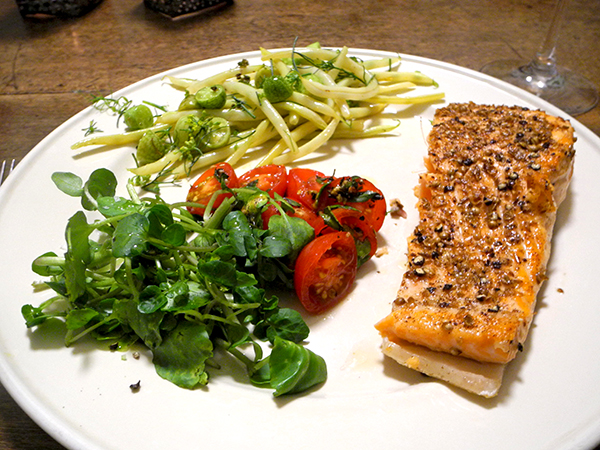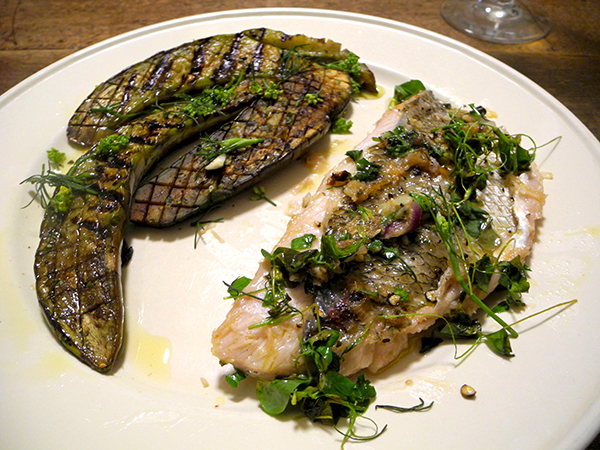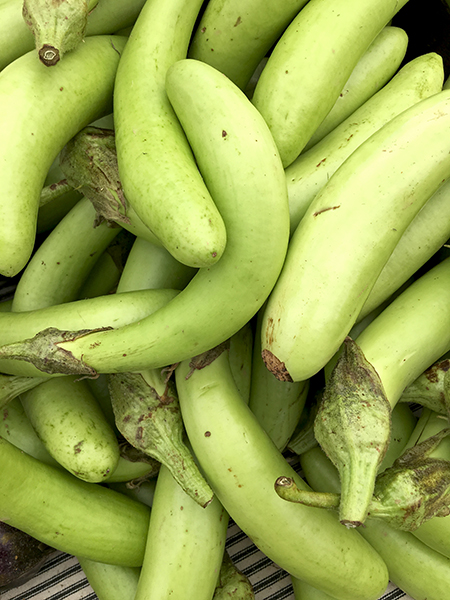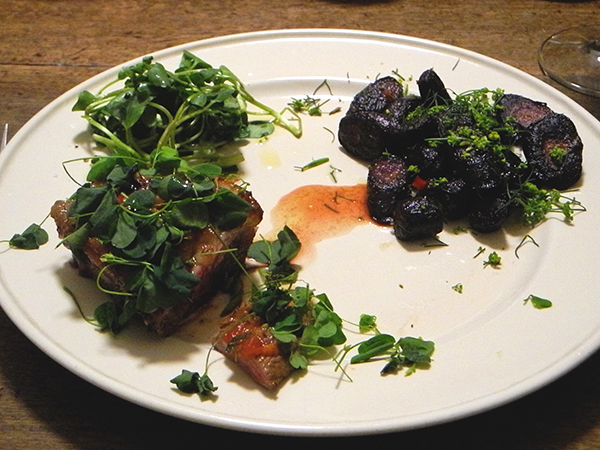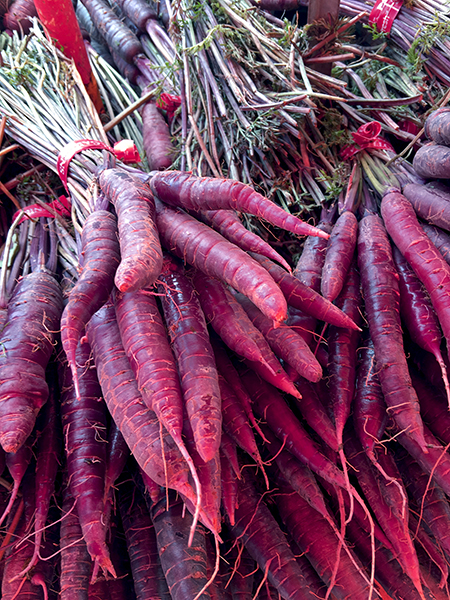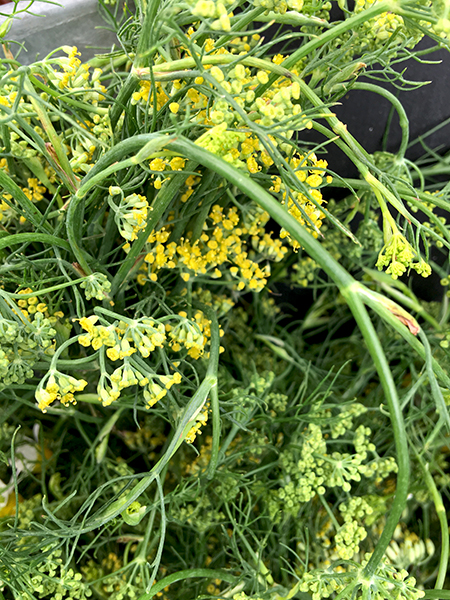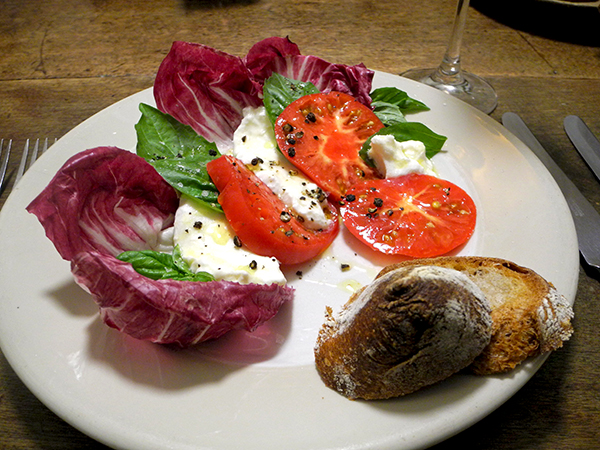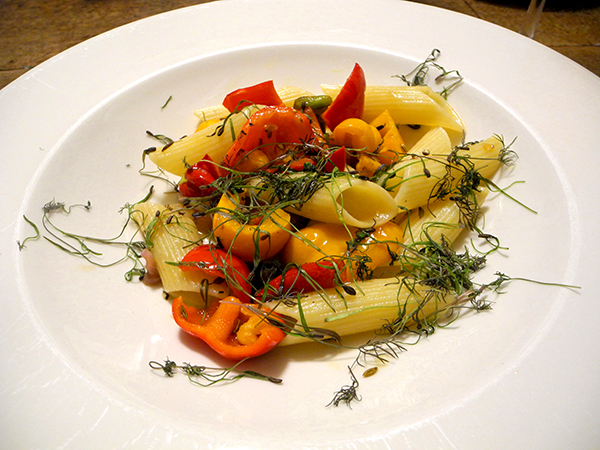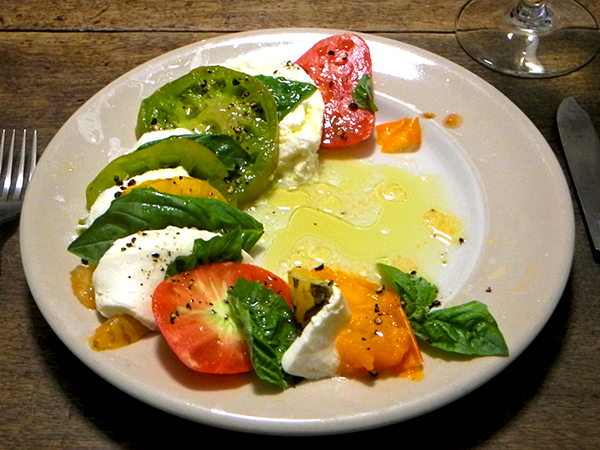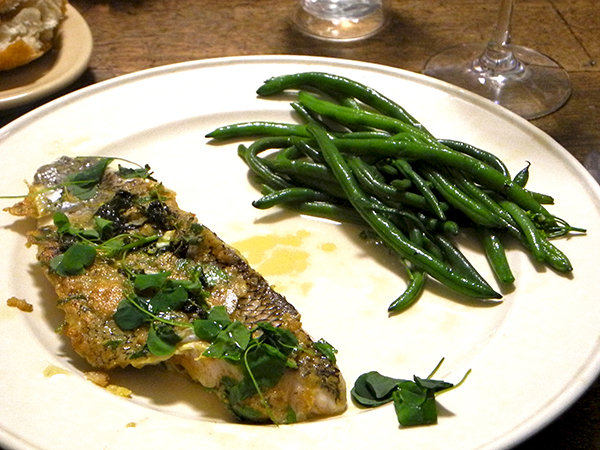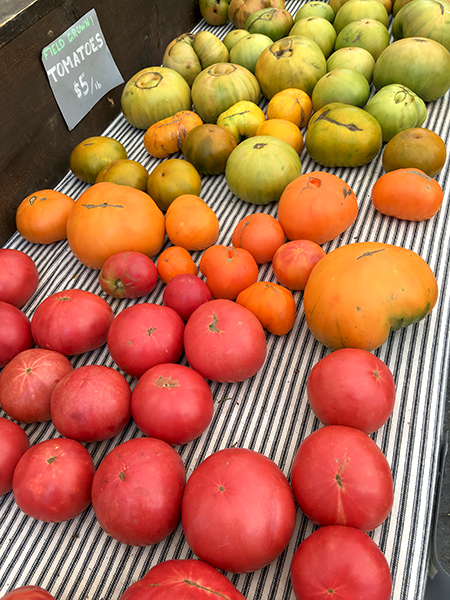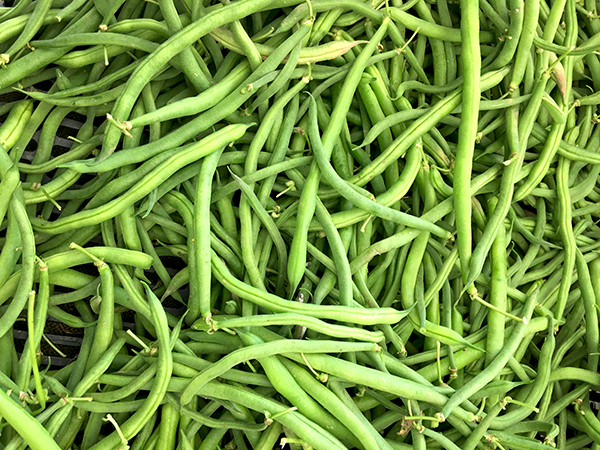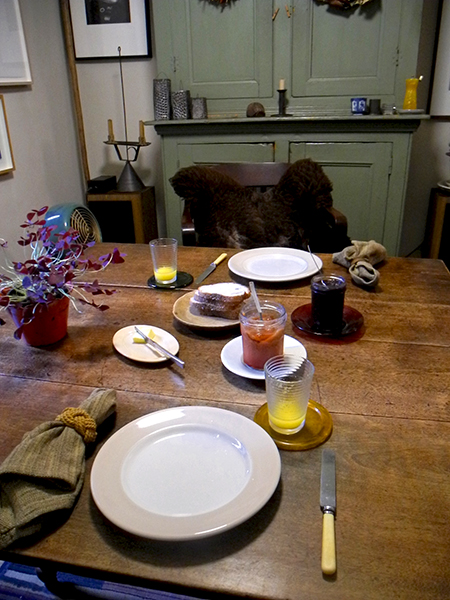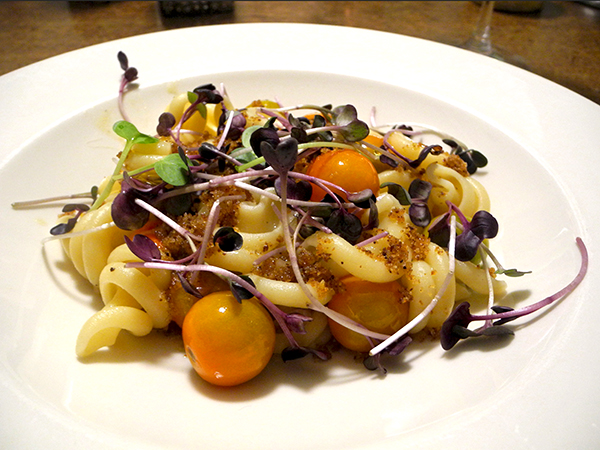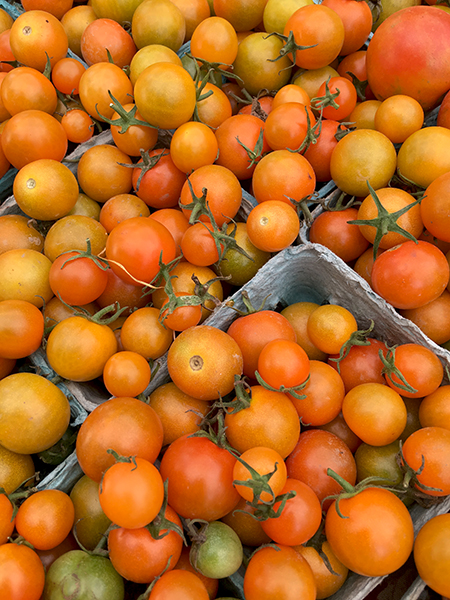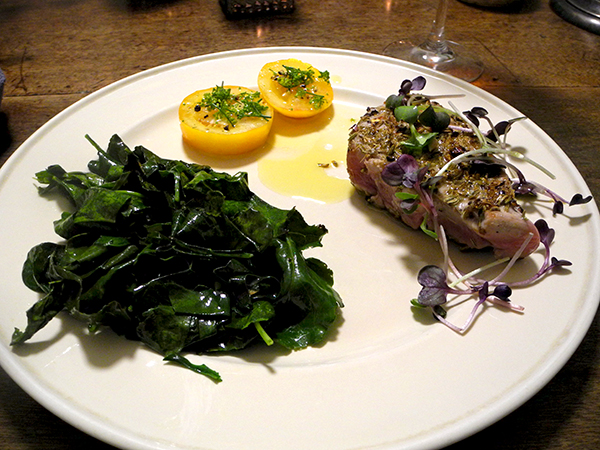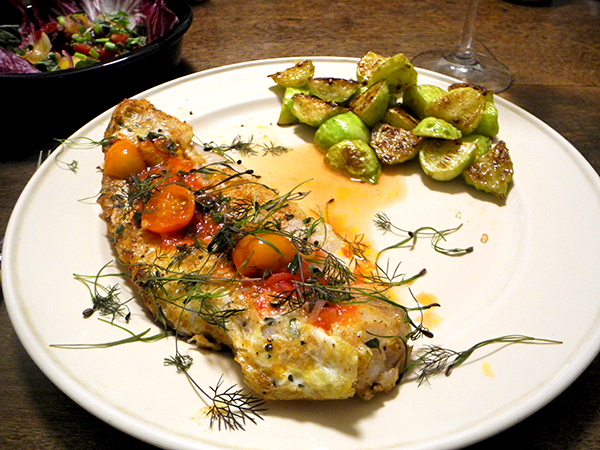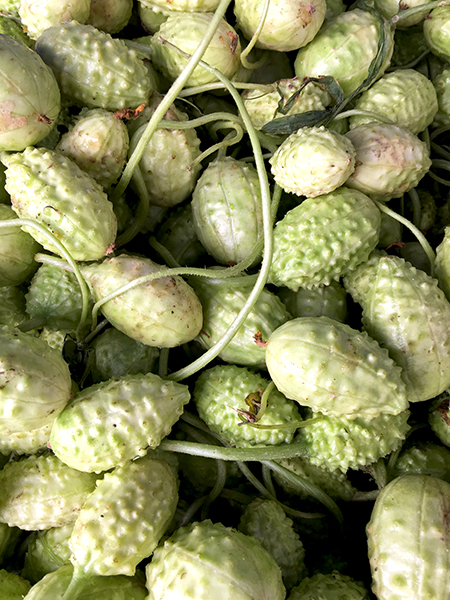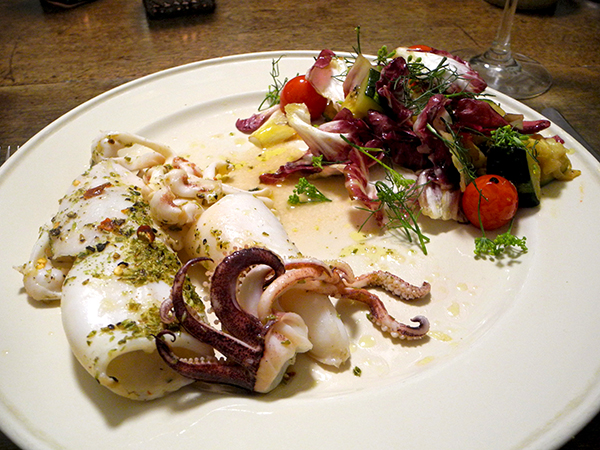
Sicily.
It was a Sicilian meal, well, creatively Sicilian. Calamari are definitely a Sicilian thing, and the wine was Sicilian. Lots of herbs familiar in Sicilian cooking showed up, like oregano (here from the Madonie Mountains, Sicily); basil (the Hudson Highlands, in New York); and there’s no dispute about the importance of anything fennel in Sicily, here fennel flowers (the Catskill Mountains, New York); there was olive oil of course (not from Sicily, but at least from southern Italy, Puglia; there was pepperoncino (the plains of Turri, Sardinia, the next island north of Sicily), and there was garlic (New York again); lemon was important (here the California Central Valley?); and there were also tomatoes (very Sicilian – via Spain – even if these came from the area in New Jersey the Delaware culture called, Tuphanne [cold water], today’s Old Tappan); there was one large zucchini, or at least a relative of the zucchini (this one grown in the Green Mountains of Vermont); finally, the northern Italian radiccchio of which there are some traces in Sicily, at least these days (had that not been the case, this little Sicily conceit would have been a deceit; the radicchio I used came from the our own north, that same farm in those same Green Mountains).
As for the dessert, peaches are Italian, although the 2 we had were from the Marlboro Mountains in New York (the farm is owned by an Italian-American family).
*Chicories are grown in Sicilian gardens, even though they appear to have been an invention, or re-invention of the north of Italy.
- a large enameled cast iron pan heated until quite hot, its cooking surface brushed with olive oil, and, while the oil was hot, about 13 ounces of rinsed and dried squid from Blue Moon Fish in the Union Square Greenmarket, bodies and tentacles, arranged very quickly in it, immediately sprinkled with some super-pungent dried Sicilian oregano from Buon Italia and part of a crushed dried Sicilian pepperoncino, also from Buon Italia, followed by drizzling a few tablespoons of juice from an organic lemon and some olive oil, the pan placed inside a pre-heated 400º oven and roasted for 4-5 minutes, removed, distributed onto 2 plates, and drizzled with the cooking juices, pieces of lemon served on the side
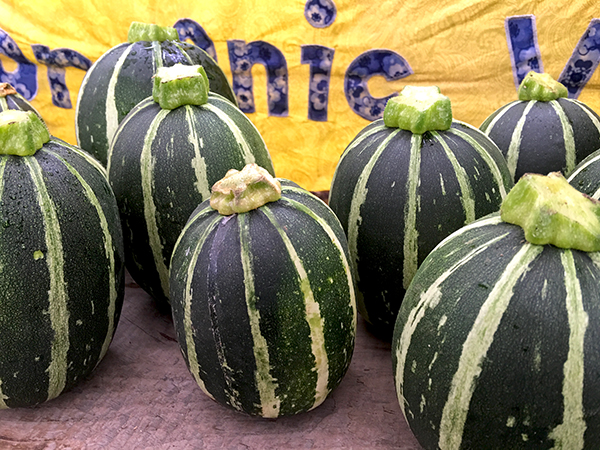
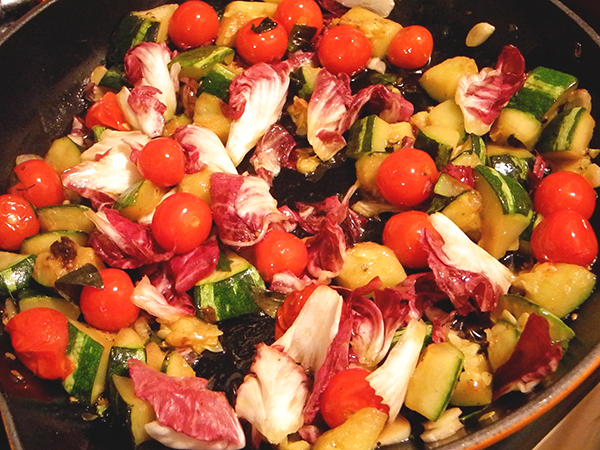
piccolo squash in the market; trifolati minutes before removed from the heat
- a luscious, re-imagined classic summer-squash-and-tomato trifolati made by sautéing chopped pieces of an egg-shape piccolo summer squash (or ‘round green squash’) from Tamarack Hollow Farm with 2 sliced garlic cloves from Alewife Farm inside a large enameled cast iron pan, until the squash began to brown, followed by some of ‘the best cherry tomatoes‘, from Stokes Farm, along with salt and pepper, stirred well and cooked for 5 minutes, during which time pieces cut or torn from the core of a head of radicchio from Tamarack Hollow Farm were gradually added, the thicker parts first, the pan removed from the heat and some basil from Sycamore Farm, torn, added, the vegetables drizzled with olive oil, covered, and allowed to sit for 10 minutes to half of an hour or so [the recipe appears in “Italian Too Easy“], served on the plates sprinkled with fragrant fennel blossoms from Mountain Sweeet Berry Farm
- the wine was an Italian (Sicily) white, Grillo, Ca’ Lustra di Zanovello, from Astor Wines & Spirits
- the music was Antonio Vivaldi’s 1728 opera, ‘L’Atenaide’, in a brilliant performance by Modo Antiquo, directed by Federico Maria Sardelli
